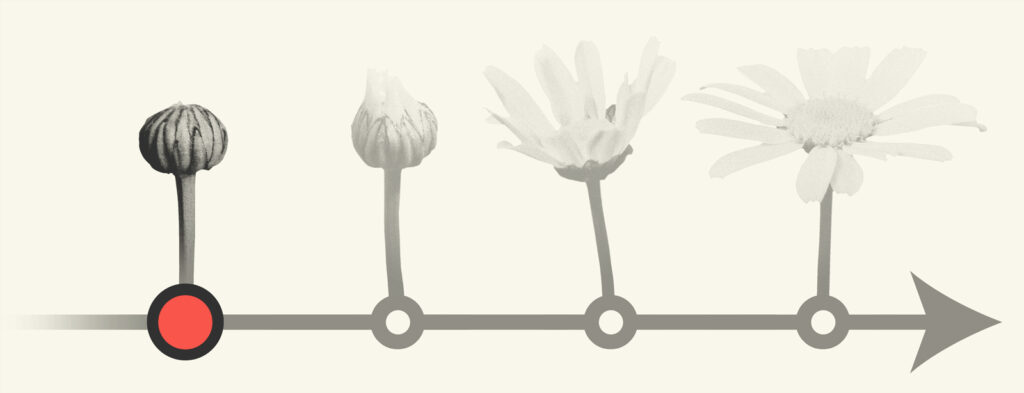
We think of living things in biological terms, but it is also possible to consider life from chemical, physical, and even economic perspectives. However we define life, both chemistry and physics are embedded in it deeply, and together form the economy of living systems. Although we easily place life into its separate biological classification, it cannot be truly separated from these other disciplines.
Take physics, for example. If we examine life – self-replicating networks that survive and reproduce over time – from a physical perspective, remarkable attributes appear. At the core of such observations lie the operations of thermodynamics, the laws that govern the transformation of energy over time.
The universe operates according to The Arrow of Time, which from our perspective moves in one direction only: forward. In this way, living things grow into the future. Over time, a seed grows, becoming a tree. The reverse can happen only mathematically or in our imagination, yet that itself is significant; mathematics has proven itself almost magical in its ability to describe physical reality. If mathematically possible, then consideration of its physical possibility is not unreasonable. Thus it is that physicists use mathematics to describe life as broken symmetry, resulting in a process that grows irreversibly in only one direction in time.
To do its work, life requires energy. Any living entity resides within an energetic “heat bath” from which it gathers and uses energy. In this way, life has an energy fueling cost, and precisely balancing that fueling cost is essential to the continuance of biological networks; we call it metabolism. This brings us to the laws of thermodynamics.
Biological networks – life – must attain thermal equilibrium and can only survive within certain temperature limits. The entropy of the Second Law of Thermodynamics dictates that energy always moves from higher states to lower states. A boulder rolling downhill is the classic example; when released, the potential kinetic energy of the boulder decreases as it comes to rest at the bottom of the slope; on its own it will never roll uphill. Living systems, of course, use energy, and must maintain a minimum rate of energy utilization over time to enable growth, repair, and dynamic kinetic stability. In its own way, dynamic kinetic stability defines living systems; individuals come and go but populations as a whole remain stable. Moreover, self-replicating biological networks must reliably absorb energy; catalytic chemical and physical behavior of specific molecular shapes and arrangements maintain life. Caloric metabolism, calories being energy units of work, is in furtherance of maintaining life’s irreversible, broken symmetry into the future.
This brings us to the natural economics of living systems, and by extension artificial economic systems, which not surprisingly mirror aspects of living systems. Just as the structures of living systems are either well or poorly suited to the “heat bath” surrounding them, so too economic systems must adapt to surrounding conditions or risk failing; some structures resonate more favorably to changing conditions than others. Just as calories function as units of energy in the metabolism of natural living systems, money functions as units of energy in the metabolism of artificial economic systems; an economy can become overheated, cool, melt down, or freeze. The importance here is that such structural networks, living or otherwise, are collective in nature, and as Darwin teaches, it is only collectively that successful adaptations survive.
At a physical-chemical level, living systems are constantly working within degrees of freedom and trapping; so too, economies. Our methods of acquiring and collecting energy, what we call accumulating wealth, are also subject to limitations and imperatives. However, whereas living systems are subject to natural laws, economic systems subject to human laws are often the product of forces antithetical to system fitness. It is here that the analogy points to how and why, unlike successful self-replicating living systems, economies fail to sustain irreversible broken symmetry into the future, and in a Darwinian way prove themselves unfit.